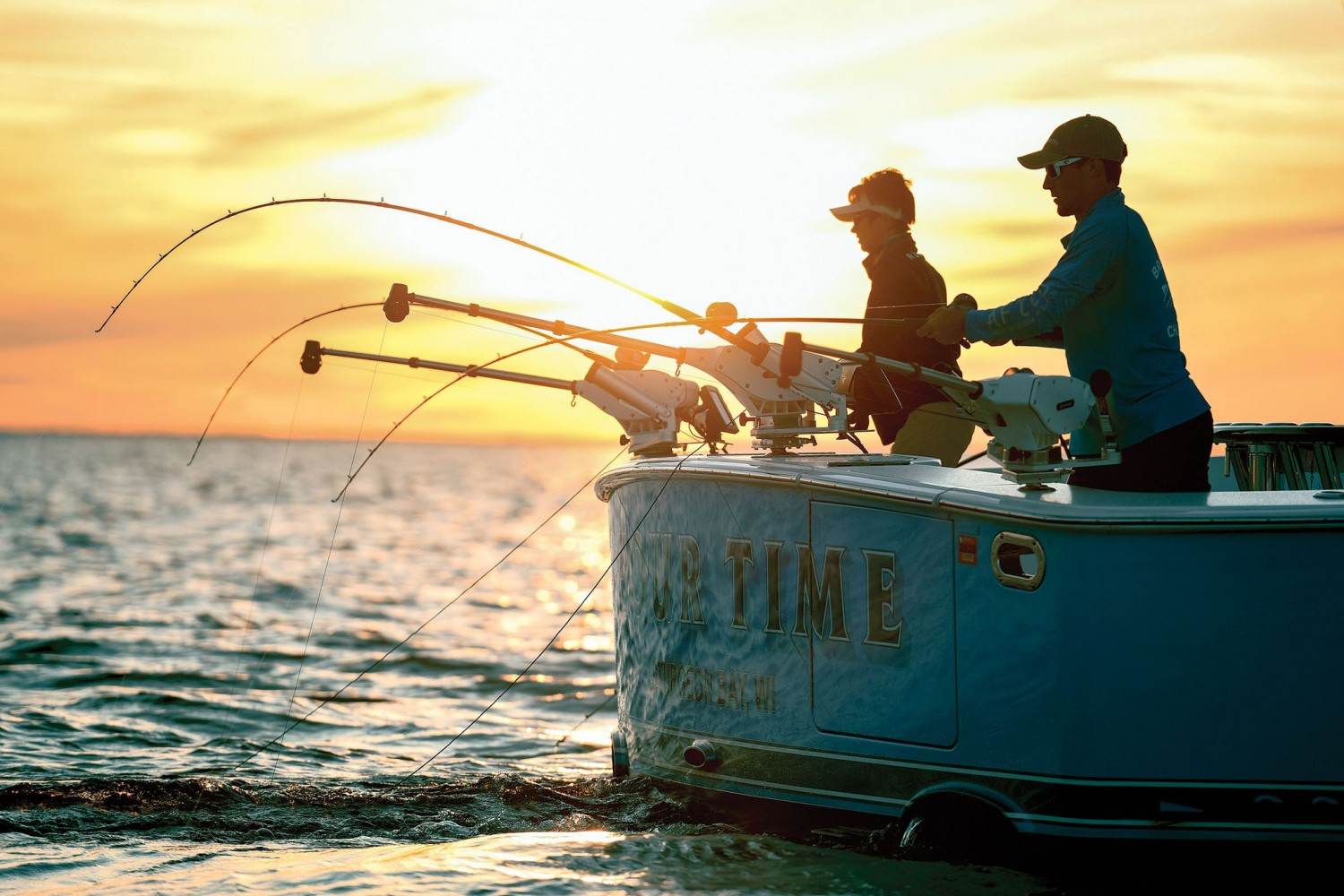Article Courtesy: saltwatersportsman.com | Originally Published: 9/28/20 | Click here for original article
Choosing a Downrigger
Although the kingfish tournament trail sagged during the last decade, many anglers still swear by downriggers, as controlled-depth fishing has proven to elicit bites on days when traditional methods fail.
“If you’re not fishing with a downrigger, you’re fishing just 1 percent of the water column,” says Ron Mitchell, a Cannon-sponsored tournament captain. “I fish them for kingfish and also for wahoo. Right now, guys are installing downriggers to use in Florida and Louisiana, and getting monster red snapper. That’s how they’re catching grouper off the bottom off the west coast of Florida.”
Cannon and Troll-Master, which makes manual riggers exclusively, primarily supply the East and Gulf coasts markets. In the Pacific Northwest, anglers frequently use Scotty downriggers to catch salmon. Prices range from $250 for a manual unit to $1,700 for an electric with all the bells and whistles.
While picking a brand might be your first decision, the more universal questions you should answer include what kind of downrigger to buy and how to mount it.
Manual or Electric
“I would say the first things to consider would be the budget and how you intend to use the downrigger,” says Bill Carson, marketing product manager for Johnson Outdoors, which makes Cannon products. For occasional use, a single manual downrigger might suffice, but tournament anglers often opt for multiple electric units.
Cannon’s manual downriggers feature a 2-to-1 retrieve ratio—for every handle turn, the spool revolves twice. That might be fine for anglers fishing fairly shallow depths, but at a retrieval rate of 250 feet per minute, the top Cannon electrics gain favor.
“A lot of people believe in manual and don’t do the electrical thing, particularly small-boat guys,” says Mitchell, who runs twin Cannon Optimum TS downriggers on his 39-foot SeaVee and swears by his electrics.
Carson explains that, with the Optimum, you can set upper and lower depth limits, pick the descent speed, track a specific depth above the bottom, and much more. Mitchell says he controls both of his Optimum downriggers with his smartphone. “Say we’re kingfishing and need to get the lines cleared to make a turn. Now all I have to do is hit one button on my phone, and they’re synced together to come up.”
Electric downriggers also automatically stop the weight at the surface or slightly below, a key benefit in the heat of a fish battle.
Mounting Options
Mitchell says SeaVee installed his downriggers when he ordered his boat. Aftermarket installation, however, can range from awesomely simple to stressfully intricate, depending upon your product choice, and your boat design and layout.
The simplest installation involves a manual downrigger on a gimbal mount that fits into a flush-mount rod holder in one of the gunwales or the transom. The more complex installation involves a fixed, stainless-steel swivel mount with a backing plate that bolts to the gunwale, and an electric connection run from a designated 12-volt DC power source to a plug.
Carson says a typical single electric-unit installation involves situating the downrigger as far aft as possible, and running the quick-connect plug from the unit to a power source in the bilge. “On the last boat I had, I ran a power source from the battery switch, and that ran from under the console back to the bilge well,” he says. “At the top of that, I put a Blue Sea Systems power center with blade fuses in it. I ran everything from the back of the boat to that power source, which helped eliminate fish-finder interference. I would always go the extra mile to get power to the aft end of the boat for downriggers.”
Cannon Optimum TS downriggers draw 20 to 35 amps and weigh 19 pounds. They also come with telescoping booms to push the cables away from the engines. Other options include rod holders that mount to the unit, downrigger cable terminators, line releases, and a retro-ease weight retriever, which—at $15—is a must-have option, Carson says.
Similar Scotty top-of-the-line, high-performance electric downriggers draw 13 to 19.5 amps and weigh 12 to 15 pounds. They feature 36- to 60-inch stainless-steel telescoping booms, and they offer retrieve speeds of 260 to 304 feet per minute.







